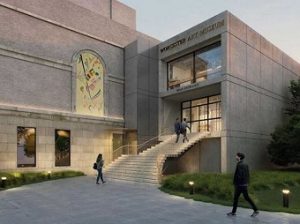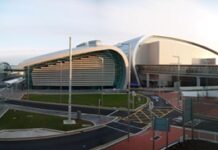
Located just an hour West of Boston, and with more than 250 employees with varying levels of access, the Worcester Art Museum needed an easy-to-use access control solution that provided the strictest security and integrated with their existing video surveillance software management system.
The Worcester Art Museum is world-renowned for its 35,000-piece collection of paintings, sculptures, photographic prints, drawings, new media, and more. Spanning more than 5,000 years of art culture, the permanent collection includes paintings by some of the most well-known names in the world of art: Monet, Gauguin, Cassatt, and Whistler. And because the collections housed in the Worcester Art Museum are priceless and irreplaceable, utilising a comprehensive security solution is essential.
“The institution’s most valuable assets are hung on the walls in public spaces,” said Worcester Art Museum Security and Safety Manager, Michael Warren. “This presents especially difficult challenges in protecting the assets from being touched, vandalised, or stolen. Technology can assist in protecting these assets but the bulk of our effort is spent developing people that respond to customer needs as well as the security needs of the collection.”
Warren said the previous security system wasn’t cohesive and included six separate vendors to provide access control, video, and alarm coverage. The alarm system in particular experienced many problems, including multiple false alarms.
At the recommendation of their trusted system integrators, the Worcester Art Museum chose Open Options’ DNA Fusion as the access control management software provider. DNA Fusion provides a unified security platform including access control, video integration, and photo ID management in an open platform and best-of-breed approach by partnering with leading systems manufacturers. With DNA Fusion, the large museum can be easily managed via a standard thick client, a web browser, or Apple and Android smartphones.
“DNA Fusion is quicker and more intuitive as if it were designed by a user. The ability to customise toolbars, for example, and to have granular control over user accounts has proved to be very valuable in our operation,” said Worcester Art Museum Director of Operations Fran Pedone.
The Worcester Art Museum security team has embraced DNA Fusion and this seamless integration with their existing video and intrusion systems. The staff reports ease-of-use as one of the key benefits of DNA Fusion, which Pedone described as very important when training new employees. “Navigating the system proved to be clear, efficient, and useful. Most controls and settings are apparent without the use of the included documentation, which itself is detailed and well-written.” A high priority for the museum was to cover the entire perimeter of the facility with multiple layers of protection including video analytics, door contacts, and motion sensor technologies,” said Warren.
“Open Options has allowed our museum to integrate all three technologies, creating a user-friendly interface for monitoring and controlling the various systems.” The museum uses several security workstations distributed throughout the facility which are operated by security guards and managers.
The use of DNA Fusion will grow as the museum continues to refine its Emergency Preparation and Response Plan. The museum has a multi-year plan for expansion of access control throughout the facility and they intend to expand the system every year as more funds become available. Warren said he is confident based on their experience with Open Options and DNA Fusion that they have invested in a solid security provider.











